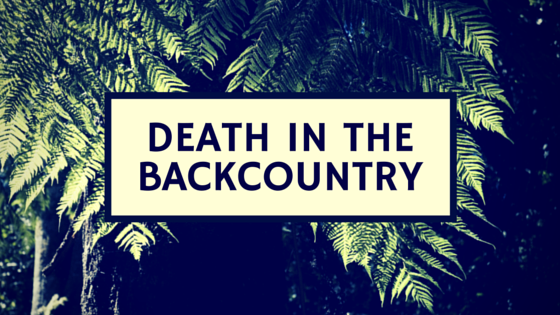
I recently finished listening to the book “The Last Season” about a backcountry ranger who disappeared in 1996. Randy Morgenson had served as a seasonal backcountry ranger for almost 30-years and was an expert at wilderness survival and Search and Rescue. When someone got lost in the Sierra Nevada, the park supervisors turned him. So what do you do when your best man goes missing?
On top of that, I then read the book “Nature Noir” which details a ranger’s career on the American River in California. Jordan Fisher Smith looks at the battle between preserving the land and protecting people who use it. He tries to figure out what it all means or does not mean. He is motivated by the pride of being a ranger, but also sees how hard it is to strike a balance between preservation of the park and access to the users. Needless to say, these books have left me thinking about death in our parks.
This year opened with a few tragedies in the wilderness. In February three hikers died, in separate incidents, while hiking Mount Baldy outside of San Diego, California. About 150 people die each year within the boundaries of National Parks alone. While this number is not alarming when compared to a number of visitors each year to the parks, it is worrisome in our lawsuit culture.
In both the books I read, the mantra “…protect the people from the park, protect the park from the people, and protect the people from the people…” kept appearing to describe a Ranger’s job. This three-tiered job description allows a lot of interpretation on how to do all those things in the face of danger. It could be viewed as, to protect the park and its guests it best to keep to nice well-groomed nature trails and cut out the majority of the risk. Not that I am or most likely any rangers are advocating that, but when faced with lawsuits managers and policymakers may consider it.
While I believe most adventurers accept the inherent risk in the backcountry there is a tendency for the inexperienced to be lulled into a false sense of safety. When you do not typically stray far from the Visitor’s Center, it is easy to view Yosemite in the same way you would view Disneyland. This leads people to make poorer choices feeling that there is no real danger.
Another issue is our “eye for an eye” attitude towards fatal wildlife interactions. While we are the typically the top of the food chain, sometimes we get reminded that we are still animals when a mountain lion or a bear decides to knock us down a peg. While these occurrences are rare, we typically go out of our way to hunt down the offending animal for a revenge killing. Some claim that the high salt content of our blood can turn a predator into a man-eater, but often we never get to test that theory out. Personally, I think we should allow the animal to establish a pattern of being a repeat offender before punishing a bear for being a bear. Many times food is not the motivating factor for an animal attack but territory or protection of its young.
We need to approach wilderness and wildlife management in a way that accepts there will be injury and death. Most of us who appreciate the vastness of nature accept this but it is also important to remember to make smart choices. We must always endeavor to tread lightly in the backcountry and make smart choices. Even the most experienced of us can make mistakes. It’s our job to be ambassadors to the outdoors and not cautionary tales.
I wanted to add a new feature just a what am I reading now:
Currently, I am reading the classic “Walking With Spring” by Earl V. Shaffer, the first man to hike the entirety of the Appalachian Trail. It’s a fun piece of history.
Leave your comments and questions below.
Leave a Reply